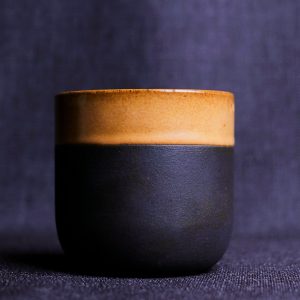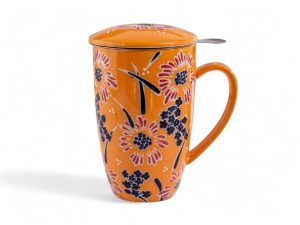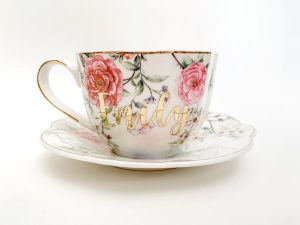Don't miss our holiday offer - up to 50% OFF!
Traditional Gong-fu cup with Shino glaze, Sake cup, Ceramic Japanese Cup, Shino Guinomi
د.م.22.07
Out of stock
This is a wheelthrown, small, traditional Gong-fu cup with Shino glaze. This tumbler is inspired by Japanese ceramic ware wabi-sabi aesthetics.
Fired in a gas kiln in reduction atmosphere to Cone 10. Firing date: February 2024. Made in Poland
Dimensions:
– Volume: 70 ml
– Height: 6cm
– Width: 5.5cm
– Foot diameter: 4cm
– Weight: 80g
Features of this item:
– Shino glaze
– Cup created on a pottery wheel
– Dark stoneware clay
– Fired in a gas kiln in heavy reduction to Cone 10
– Suitable for hot and cold drinks
*This piece is functional and food-safe.
Soda-firing is the process in which sodium oxide (soda) is introduced into the hot kiln. Once inside, it will vaporize and interact with the red hot surfaces of the work leaving beautiful flashes of color and glaze. As the sodium vapor flows through and around the glowing hot pottery, it binds to the silica molecules on their surfaces to create a glassy glaze which tapers into gradients of color called flashing. Since the soda fuses to the surfaces of the work in this way, it blurs the line between pot and glaze/surface; they become one. The introduction of this soda vapor into the kiln’s atmosphere which then has a dramatic effect on the pots makes this process, much like wood-firing, an atmospheric firing process.
The gongfu tea practice or kung fu tea (Chinese: 工夫茶 or 功夫茶), is a type of Chinese tea ceremony, involving the preparation and of tea. It is probably based on the tea preparation approaches originated in Fujian and the Chaoshan area of eastern Guangdong. The term literally means “making tea with skill”. The approach often involves using smaller brewing vessels and a higher leaf-to-water ratio than in western-style brewing.
Shino glaze is a traditional Japanese high feldspar glazes having cream to orange color flashing or blushing. These glazes were developed in Japan and their aesthetics are covered on many other websites and books. But they are art pieces, described by artists, using the language of art. Although the term Shino has become very broad in recent years let us restrict this to the visuals of the “pearly white breaking to orange” and the carbon trapping (which leaves random dark, shadowy areas in the glaze). Of course, there is also a mystique surrounding the bubbling and crawling effects of many of the most loved pieces. While we might consider these as defects, traditionally they were considered decorative and pleasing.
The product retains its natural clay color, dullness and texture.
If you need a gift for Japanese culture lovers, then this is what you were looking for.
Ready to ship.
If you have any questions, please contact me, I will be happy to provide you with all the information you need.






richard bevan –
Lovely ceramic cup. Very tactile and well made.
Elvira Piedra –
A splendid little teapot! Pours beautifully and feels so good in the hand. The tenmoku glaze is wonderful and the pot sits so handsomely, at home with the other teawares. I am grateful to have several pieces of Michał’s and highly recommend his work.
Benjamin –
Splendid pieces of art. I hope to buy more of them so I can complete my new tea set.
Benjamin –
Really glad to have bought this. This is gorgeous.